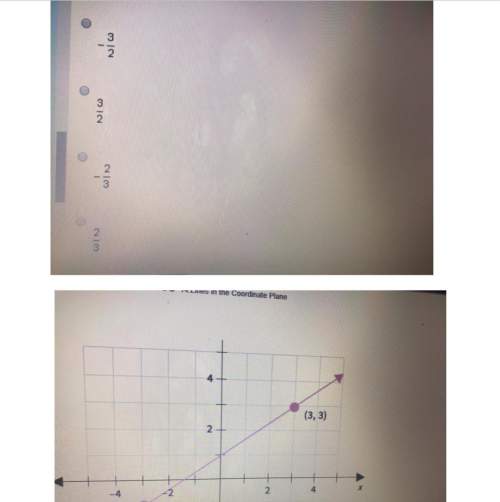
Mathematics, 20.09.2019 21:00 lreese
This problem is from our textbook. march 1, 1974, a grand jury indicted seven former aides to u. s. president richard nixon for attempting to cover up white house involvement in a burglary of the democratic national committee at the watergate complex in washington. on april 18, the judge in the case, john sirica, issued a subpoena for tapes of president nixon's conversations with the defendants. the president's attorney, james st. clair, attempted to delay responding to the subpoena. the prosecutor, leon jaworski, then used an unusual pro- cedure to appeal directly to the supreme court and request that the court order the president to supply the tapes. the court heard oral arguments on july 8, and the justices met on july 9 to decide the case.
one justice, william rehnquist, withdrew from the case, probably because he had worked in president nixon's justice department. of the remaining eight justices, six quickly agreed to uphold the prosecutor's request. two justices, warren burger and harry blackmun, were reluctant to uphold the prosecutor's request, because they thought his direct appeal to the supreme court was improper. also on july 9, president nixon's attorney said that the president had "not yet decided" whether he would supply the tapes if the supreme court ordered him to. this statement was probably intended to pressure the court into backing down from the confrontation. at minimum, it was probably intended to encourage some justices to vote against upholding the prosecutor's request. if the vote was split, the president could argue that it was not sufficiently definitive for a matter of this magnitude. jaworski believed that in the event of a split vote, the president would "go on television and tell the people that the presidency should not be impaired by a divided court." we will regard this as a two-player game. player 1 is justices burger and blackmun, whom we assume will vote together; we therefore treat them as one player. player 2 is president nixon. first, justices burger and blackmun decide how to vote. if they vote to uphold the prosecutor's request, the result is an 8-0 supreme court decision in favor of the prosecutor. if they vote to reject the prosecutor's request, the result is a 6-2 supreme court decision in favor of the prosecutor. after the supreme court has rendered its decision, president nixon decides whether to comply by supplying the tapes, or to defy the decision. president nixon's preferences are as follows: • best outcome (payoff 4): 6-2 decision, president defies the decision. second-best outcome (payoff 3): 6-2 decision, president supplies the tapes. • third-best outcome (payoff 2): 8-0 decision, president supplies the tapes. • worst outcome (payoff 1): 8-0 decision, president defies the decision.
explanation: the president's best outcome is a divided decision that he can defy while claiming the decision is not really definitive. his worst outcome is an 8-0 decision that he then defies; this would probably result in immediate impeachment. as for the two intermediate outcomes, the president is better off with the weaker vote, which should give him some wiggle room. justices burger and blackmun's preferences are as follows: • best outcome (payoff 4): 6-2 decision, president supplies the tapes. • second-best outcome (payoff 3): 8-0 decision, president supplies the tapes. • third-best outcome (payoff 2): 8-0 decision, president defies the deci- sion. • worst outcome (payoff 1): 6-2 decision, president defies the decision. explanation: in their best outcome, burger and blackmun get to vote their honest legal opinion that the prosecutor's direct appeal to the court was wrong, but a constitutional crisis is averted because the president complies anyway. in their second-best outcome, they vote dishonestly, but they suc- ceed in averting a major constitutional crisis. in their third-best outcome, the crisis occurs, but because of the strong 8-0 vote, it will probably quickly end. in the worst outcome, the crisis occurs, and because of the weak vote, it may drag out. in addition, in the last outcome, the president may succeed in establishing the principle that a 6-2 court decision need not be followed, which no member of the court wants. (a) draw an extensive form game tree for the situation described, providing clear labels and payoffs for each player. (b) use backward induction to make a prediction about the outcome. (c) read up on what actually happened and write a brief summary.

Answers: 3


Another question on Mathematics

Mathematics, 21.06.2019 20:00
Given ab and cb are tangents of p, and m =10°. what is the measure of abp?
Answers: 3

Mathematics, 21.06.2019 23:00
Two years ago a man was six times as old as his daughter. in 18 years he will be twice as old as his daughter. determine their present ages.
Answers: 1

Mathematics, 22.06.2019 01:10
Pamela has a 30-year, 5.75% mortgage on her $250,000 home. she has been paying on it for 5 years, and has recently hit some financial trouble. if her lender agreed to lower the interest rate on her $231,905.47 balance to 5.5%, what will her new payment be for the remainder of the loan?
Answers: 2

Mathematics, 22.06.2019 02:00
Sammie has 3 times as many goldfish as nora. nora has 4 goldfish. how many goldfish do sammie and nora have in all?
Answers: 2
You know the right answer?
This problem is from our textbook. march 1, 1974, a grand jury indicted seven former aides to u. s....
Questions



Chemistry, 03.07.2019 16:40

Social Studies, 03.07.2019 16:40

Chemistry, 03.07.2019 16:40



Chemistry, 03.07.2019 16:40

Social Studies, 03.07.2019 16:40

Advanced Placement (AP), 03.07.2019 16:40

Arts, 03.07.2019 16:40


World Languages, 03.07.2019 16:40

Arts, 03.07.2019 16:40


Computers and Technology, 03.07.2019 16:40

Social Studies, 03.07.2019 16:40


Computers and Technology, 03.07.2019 16:40

Computers and Technology, 03.07.2019 16:40





